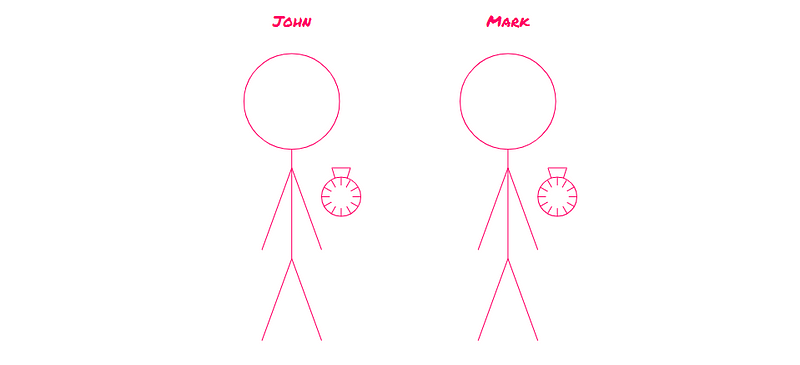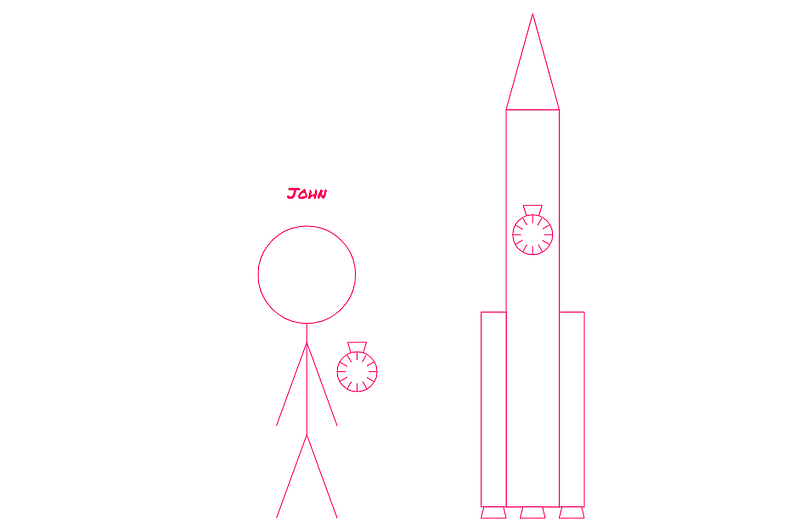How to Determine the Velocity of Time Travel: A Response to Rebel Science
Written on
Understanding the Claims
Recently, Rebel Science asserted that time travel, in any direction, is unattainable and presented evidence to support this stance. I firmly oppose this view and aim to provide a counter-argument. While I am not a physics expert, the contentious nature of the original article motivates me to engage in this discussion.
Rebel Science's Assertion
Most individuals, including numerous physicists, believe that time travel is feasible but only from the past to the future, suggesting that we are perpetually advancing through time. Rebel Science refutes this, claiming it is merely a mental illusion and that traveling through time—either forwards or backwards—is impossible. Their proof is outlined as follows:
> Traveling in time necessitates a velocity in time defined as v = dt/dt = 1, which is nonsensical. This is the entirety of their proof, which they argue is sufficient to invalidate any claims supporting the possibility of time travel.
While there is an element of truth in this assertion, it does not support Rebel Science's conclusion. To clarify, let’s examine the fundamental concept of velocity.
Defining Velocity
Velocity quantifies change over time. For instance, consider a car's velocity, which is the distance traveled per unit time:

If a car covers 300 meters in 4 seconds, we can calculate its velocity as follows:

Thus, the car's velocity is 75 m/s.
Now, revisiting Rebel Science's argument:
> Traveling in time requires a velocity in time defined as v = dt/dt = 1, which is nonsensical.
As we noted, velocity measures change per unit time. Therefore, a "velocity of time" would be expressed as dt/dt. Since dt/dt = 1, we arrive at a dimensionless quantity.
Does this imply that v = 1, as Rebel Science suggests?
Not necessarily. A dimensionless value does not have to equal 1, just as our car's velocity did not.
The Essential Point
Velocity is always measured concerning something else. For instance, the car's velocity is typically evaluated relative to the Earth's surface. If we walk inside a moving train, we can gauge our speed relative to the train or the ground:

If we walk at 5 km/h in a train traveling at 100 km/h, our speed relative to the train is 5 km/h, while our speed compared to the Earth is 105 km/h.
To analyze a velocity in time, we must identify the frame of reference.
Imagine John and Mark, both 24 years old, standing side by side with precise clocks:

If 100 seconds elapse for John, the same duration passes for Mark. No surprises here.
However, if Mark boards a super-fast rocket with his clock:

Mark travels to Alpha Centauri, located roughly 4 light years away, at half the speed of light and returns immediately. We will assume that the time taken to accelerate to this speed is negligible.
From John's perspective, Mark's journey spans 16 years: the total distance is 8 light years (4 light years to go and 4 light years to return), and Mark travels at half the speed of light. Consequently, when Mark returns, John is now 40 years old (24 + 16).
Special Relativity teaches us that even though John has aged 16 years, Mark has aged less than 14 years. The calculations reveal this (where c denotes the speed of light):

In essence, Mark has effectively traveled over 2 years into John's future.
Examining Rebel Science's Statement Again
Rebel Science stated:
> Traveling in time necessitates a velocity in time defined as v = dt/dt = 1, which is nonsensical.
Now we can see that this assertion lacks merit. The velocity—relative to John—at which Mark is moving through time is:

This value is indeed dimensionless. So what? It remains significant! A velocity of 2 indicates that for each year Mark travels, he advances 2 years into John's future. Moreover, this velocity is not inherently equal to 1, as Rebel Science claims.
Final Thoughts
Time travel, particularly into the future, is undoubtedly achievable. In fact, it occurs regularly: when you drive to work and return, you have traversed into the future. Of course, in this scenario, the velocity of time travel is nearly 1 (but still exceeds it).
Rebel Science’s assertion that a velocity must ultimately reduce to 1 is incorrect, yet they are correct in noting that this velocity is dimensionless.
If you would like to support future content, consider contributing on Patreon.